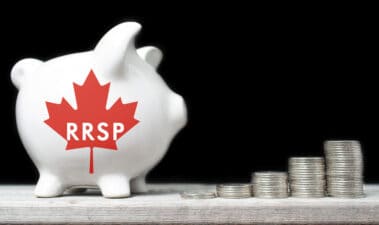Canadian seniors who are collecting Old Age Security (OAS) pensions are trying to figure out ways to earn more money without being hit with extra taxes.
In 2020, the OAS clawback kicks in at an income level of $79,054. Every dollar above that amount triggers a 15% pension recovery tax that the CRA implements until the full OAS pension is wiped out at the maximum income recovery threshold of $128,137.
A retirement income of $79,000 for an individual might sound high, but it doesn’t take long to hit that target if a person has a decent company pension and is also receiving full CPP and OAS pensions as well as income from RRIF payments and taxable investments. In addition, some people have part-time jobs or rental properties.
One way to boost earnings without putting your OAS at risk is to generate the income inside a Tax-Free Savings Account (TFSA). The vehicle has become a valuable tool for investors of all ages since its inception in 2009, but retirees can really take advantage of the benefits.
Income and capital gains generated inside the TFSA are not taxed and the withdrawal of funds is not used by the CRA when net world income is calculated to determine potential OAS clawbacks.
Dividend stocks are popular for generating income right now, as GICs currently offer rates that barely cover inflation. That scenario isn’t expected to change in the medium term.
Let’s take a look at one top Canadian dividend stock that might be an interesting pick to start a balanced TFSA income portfolio.
BCE
BCE (TSX:BCE)(NYSE:BCE) has a long history of being a favourite holding among retirees.
The company has a proven track record of delivering reliable and growing dividends supported by free cash flow. BCE just raised the dividend by 5% for 2020, bringing the annualized payout to $3.33 per share.
This is the 12th straight year the board has raised the payout by at least 5%.
BCE reported solid 2019 results that met its targets. The company signed up 743,000 net new wireless, internet, and IPTV subscribers over the 12 months, representing a 5% increase compared to 2018.
Free cash flow growth was 7% for 2019, and BCE is providing guidance of 3-7% growth for 2020.
The company continues to invest heavily in network upgrades to ensure it protects its competitive advantage while meeting rising demand for broadband as video streaming continues to grow. BCE’s fibre-to-the-premises program is installing direct fibre links to residential and business customers.
In preparation for the next generation of smartphones, BCE is also rolling out its 5G mobile network.
Low interest rates and declining bond yields are helping BCE. The company uses debt to fund part of its capital program and reduced borrowing costs can result in more cash being available for distributions to shareholders.
The trend in low rates is expected to continue for some time, as global markets prepare for a potential economic downturn caused by trade battles and the impact of the recent coronavirus outbreak in China.
The stock has more than doubled in the past decade, providing a nice bonus for income investors. BCE currently offers a solid 5.2% dividend yield.
The bottom line
BCE should continue to be a steady holding for a diversified TFSA income fund designed to generate tax-free income.
The TSX Index is home to many high-quality dividend stocks that offer yields in the 4-6% range. A balanced portfolio could easily produce an average return of 5%.
The cumulative TFSA contribution limit is $69,500 in 2020. A yield of 5% on that amount generates $3,475 in annual income that wouldn’t be counted toward a potential OAS clawback.







